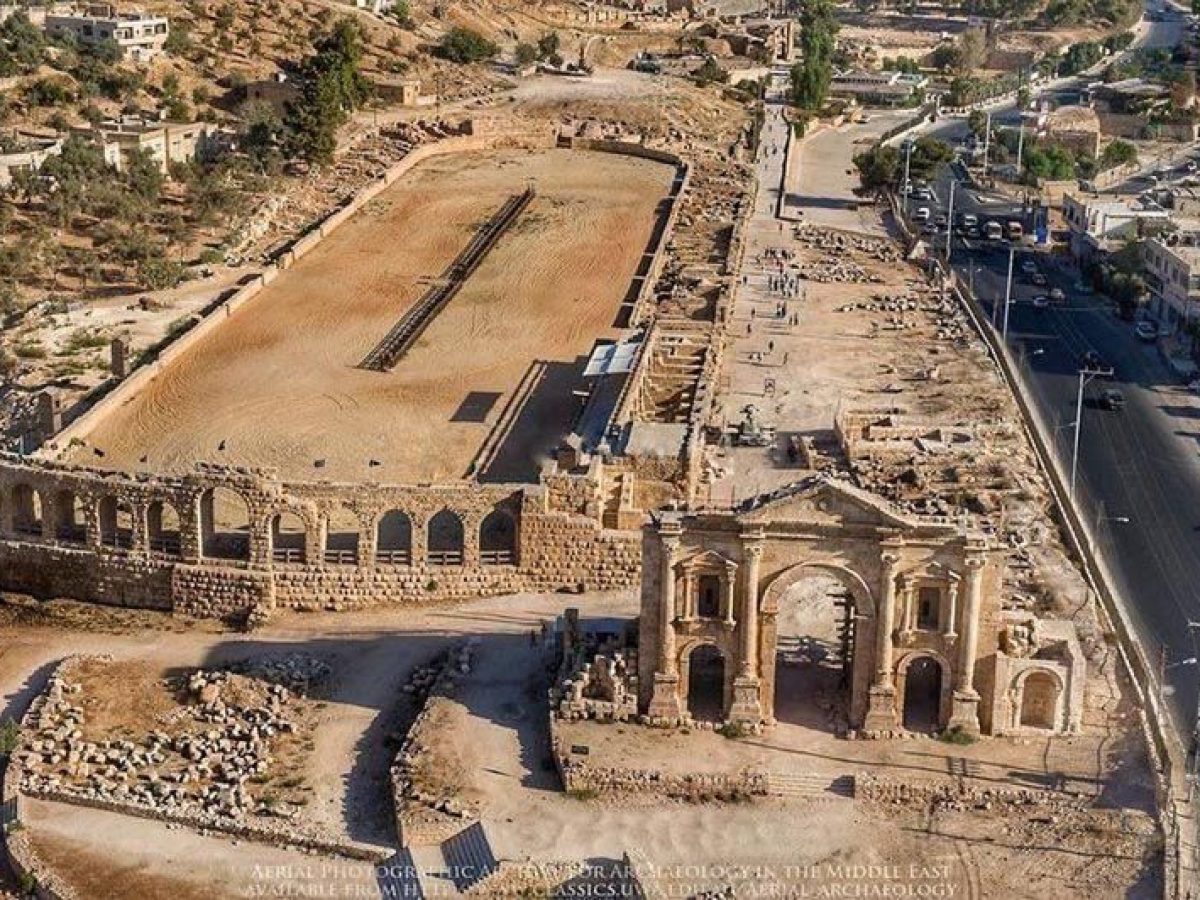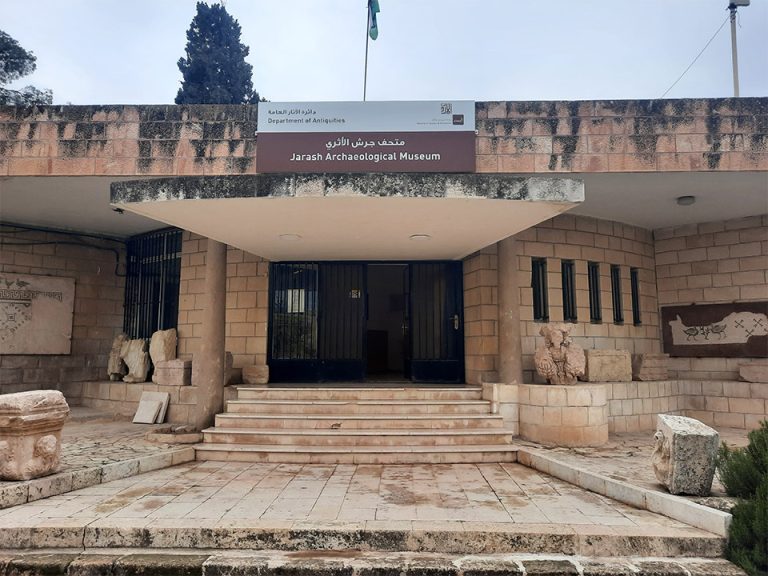A close second to Petra on the list of favourite destinations In Jordan is the ancient city of Jerash.
It boasts an unbroken chain of human occupation dating back more than 6,500 years.
The city’s golden age came under Roman rule and the site is now generally acknowledged to be one of the best preserved Roman provincial towns in the world. Hidden for centuries in sand before being excavated and restored over the past 70 years, Jerash reveals a fine example of the grand formal, provincial Roman urbanism that is found throughout the Middle East, comprising paved and colonnaded streets, soaring hilltop temples, handsome theatres, spacious public squares and plazas, baths, fountains and city walls pierced by towers and gates.
The Jerash Festival, held in July every year, transforms the ancient city into one of the world’s liveliest and most spectacular cultural events. The festival features folklore dances by local and international groups, ballet, concerts, plays, opera, and sales of traditional handicrafts, all in the brilliantly floodlit dramatic surroundings of the Jerash ruins. For more information about the Jerash Festival, visit: www.jerashfestival.jo
The ruins are extensive and impressive.
Highlights include:
• Hadrian’s Arch
• Hippodrome
• Colonnaded Street
• Cathedral
• North Theatre
• South Theatre
• Jerash Archaeological Museum
Other Places to Visit:

Hadrian’s Arch in Jerash, also known as the Triumphal Arch, was built in 129 AD to commemorate the visit of Emperor Hadrian to the city. This grandiose structure originally served as a gateway into the ancient city, standing at the beginning of the main thoroughfare. Its architectural design reflects the grandeur typical of Roman triumphal arches, featuring detailed carvings and classical Roman elements. The arch is strategically located at the city’s entrance, making it not only a significant ceremonial structure but also a practical part of Jerash’s urban layout. Over the years, Hadrian’s Arch has withstood the test of time and remains an imposing reminder of Roman architectural prowess and their ability to integrate utility with magnificence.
The Hippodrome in Jerash is a remarkably well-preserved Roman circus, one of the smallest yet most complete examples known from the ancient world. This site was specifically designed for chariot races, a popular form of entertainment during the Roman era. With a seating capacity of around 15,000 spectators, the Hippodrome’s structure illustrates the social and cultural importance of sporting events in Roman cities. Visitors today can witness re-enactments of Roman games, including chariot races and gladiatorial battles, which bring the ancient atmosphere of the Hippodrome back to life. These performances are a vivid reminder of the site’s historical function and its role in the public life of Roman Jerash, providing a tangible link to the past.


The Jerash Archaeological Museum, located within the grounds of the ancient city of Jerash, offers a comprehensive showcase of artifacts that span the rich history of this region. Established to preserve and exhibit finds from Jerash and its surroundings, the museum features an array of items from different epochs, particularly from the Greco-Roman and Byzantine periods. Visitors can explore collections that include pottery, coins, statues, and stunning mosaics, each piece narrating a part of the extensive narrative of the city. The museum not only highlights Jerash’s historical and cultural significance but also provides educational insights into the everyday lives of its ancient inhabitants. Through its exhibits, the museum emphasizes the artistic and architectural advancements of the periods represented, making it a crucial stop for understanding the full historical context of Jerash.
The local population in Jerash is known for its hospitality and deep-rooted pride in their cultural heritage. This welcoming atmosphere makes exploring the city a delightful experience.
Accommodation options in Jerash range from traditional guesthouses to modern hotels, catering to various preferences and budgets. These are generally designed to offer visitors a comfortable base for exploring the ancient ruins.
Local cuisine in Jerash is rich with traditional Jordanian dishes. Restaurants and cafes around the archaeological site serve popular local fare like mansaf and kebabs, often in settings that allow diners to enjoy views of the ancient city.
Visitors can shop for souvenirs like handcrafted jewelry, pottery, and traditional Jordanian clothes in the small shops around Jerash. These local businesses offer authentic products that reflect the cultural heritage of the region.
Visiting Jerash provides a comprehensive experience that combines historical exploration with cultural immersion, set against the backdrop of one of the Middle East’s most impressive Roman sites.

